#empress eugenie of the french
Explore tagged Tumblr posts
Text
I bring you not very good news: Nancy Goldstone wrote a double biography on Elisabeth and Empress Eugenie, to be published on February 6 of next year.

After reading @vivelareine's review of Goldstone's book on Marie Antoinette I simply do not trust this author is a good researcher, and while I won't judge this book until it's out, I can't help but being very wary already. The synopsis alone doesn't give me much hope:
From the acclaimed author of In the Shadow of the Empress comes the thrilling chronicle of two of the most influential and glamorous women in nineteenth-century Europe—Elisabeth, empress of Austria, and Eugénie, empress of France—and their efforts to rule amid the scandal, intrigue, tragedy, and violence of their era.
When they married Emperors Franz Joseph and Napoleon III, respectively, Elisabeth of Austria and Eugénie of France became two of the most famous women on the planet. Not only were they both young and beautiful—becoming cultural and fashion icons of their time—but they played a pivotal role in ruling their realms during a tempestuous era characterized by unprecedented political and technological change.
Fearless, adventurous, and independent, Elisabeth and Eugénie represented a new kind of empress—one who rebelled against tradition and anticipated and embraced modern values. Yet both women endured hardship in their private and public lives. Elisabeth was plagued by a mother-in-law who snatched her infant children away and undermined her authority at court. Eugénie’s husband was an infamous philanderer who could not match the military prowess of his namesake. Between them, Elisabeth and Eugénie were personally involved in every major international confrontation in their turbulent century, which witnessed thrilling technological advances, as well as revolutions, assassinations, and wars.
With her characteristic in-depth research and jump-off-the-page writing, Nancy Goldstone brings to life these two remarkable women, as Europe goes through the convulsions that led up to the international landscape we recognize today.
You see, I don't think it's crazy to pair up Elisabeth and Eugenie in a biography if your focus is going to be their queenship. Because they were very different as empresses, and I'd love a comparative study on why and how was that possible. Yet the synopsis is implying they were similar? How was Elisabeth personally involved in every major international confrontation? She was only personally involved in the Compromise, every other event she only reacted to (if even). Meanwhile Eugenie actively tried to participate in the politics of France and influence her husband (successfully in many cases, I believe).
The "domineering mother-in-law" part also worries me. Unsere liebe Sisi's been out since 2008, there's no excuse to not give Sophie a more nuanced portrayal.
But well, authors usually don't write the synopsis of their books, so I won't read more into it than what I've done already. I truly hope this biography isn't terrible because we don't need to add one more book to the already giant pile of books about Elisabeth that are filled with myths and misinformation.
#sorry for the negativity i just keep expecting translations on books about elisabeth and her family that already exist#and no one seems to be interested in doing it! i want Valerie's diary i want correspondance i want biographies on sophie#we are never going to have a good biography written in english if the primary sources are ignored for being in german#also I need a crash course on eugenie lol someone recommend me a good biography on her#empress elisabeth of austria#empress eugenie of the french#historian: nancy goldstone
37 notes
·
View notes
Text


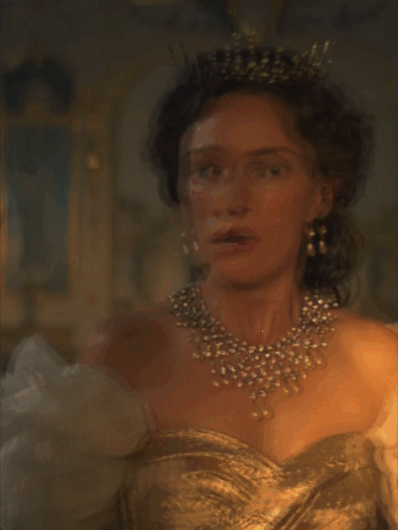

Sisi (2021) + Costumes
Eugénie de Montijo, The Empress of the French’s golden & white dress in Season 03, Episode 01.
#Sisi#Sisi (2021)#Eugénie de Montijo#Empress Eugenie of the French#costumes#costume drama#costumesource#period drama#perioddramaedit#1800s#19th century#gold#white#Paris#France#Europe
114 notes
·
View notes
Text







Women in History Month (insp) | Week 3: Consorts and concubines
#historyedit#perioddramaedit#women in history#women in history month challenge#my edits#mine#isabella of parma#imperial noble consort dunsu#eleanor of toledo#ines de castro#mme du barry#eugenie of montijo#empress fu shou#austrian history#chinese history#italian history#french history#portugese history#18th century#15th century#3rd century#14th century#19th century
153 notes
·
View notes
Text

Empress Eugenie by Claude Marie Dubufe.
#claude marie dubufe#french empire#empire français#empress eugenie#condesa de teba#spanish aristocracy#dynastie bonaparte#bonaparte#buonaparte#maison bonaparte
21 notes
·
View notes
Photo
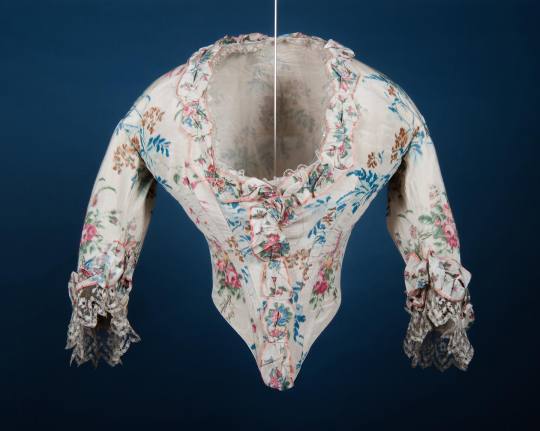
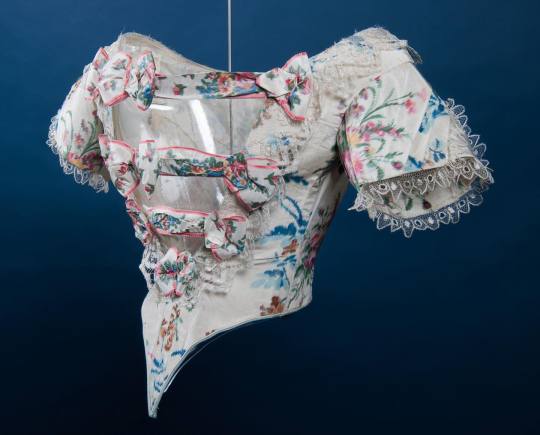
Day & Evening Bodices owned by Empress Eugenie of France
1850s-1870s
The Bowes Museum via Facebook
#evening dress#fashion history#empress eugenie#1850s#1860s#1870s#day dress#bodice#19th century#floral#flower print#silk#france#eugenie de montijo#french royal family#bowes museum
365 notes
·
View notes
Text

Empress Eugénie at the Château de Compiègne
2 notes
·
View notes
Text
haven't been thinking of my beloved eugenie in while now but she's still so precious to me
4 notes
·
View notes
Text
EUGÉNIE DE MONTIJO // EMPRESS OF THE FRENCH
“She was Empress of the French from her marriage to Napoleon III on 30 January 1853 until the Emperor was overthrown on 4 September 1870. From 28 July to 4 September 1870, she was the de facto head of state of France. As Empress, she used her influence to champion "authoritarian and clerical policies"; her involvement in politics earned her much criticism from contemporaries. After the fall of the Empire, she, her husband and their son lived in exile in England. She outlived both of them.”


1 note
·
View note
Text

Eugenie de Montijo, French Empress, 1850-55.
37 notes
·
View notes
Text
Evening Dress, ca.1865, designed by dressmaker Madame Vignon of Paris. Silk.
The Cohasset Historical Society.
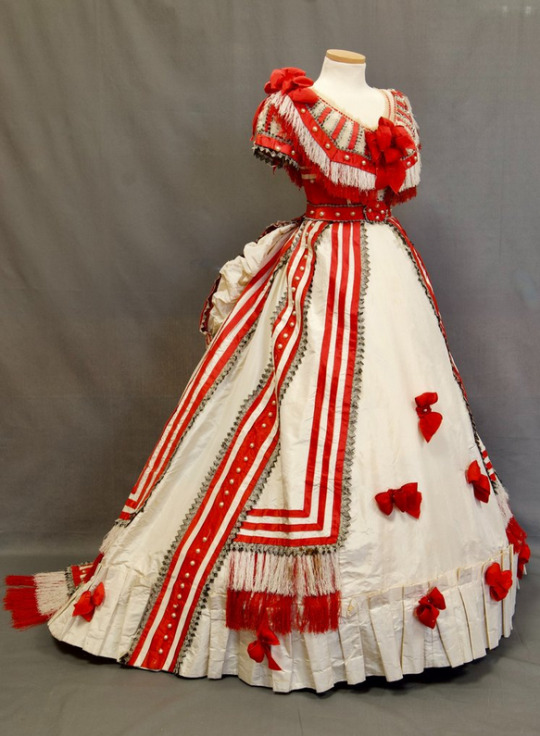
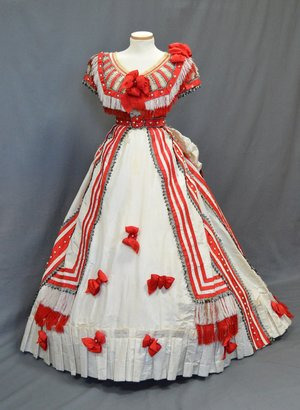

Maria Barnes Hooper, wearer
Maria Barnes was born in 1827 in Hingham, Mass., to parents Ensign Barnes Jr. and Deborah Lincoln. The Lincoln family has notable members of American History, including Major General Benjamin Lincoln, who served under George Washington in the Revolutionary War and received British commander Lord Charles Cornwallis’ surrender at Yorktown, and Abraham Lincoln, the 16th President of the United States.
Maria married John Sewell Hooper, a stationary merchant, in Hingham in 1852. The Hoopers applied for a passport in 1865 that shows the couple and their young son traveling to France. Family legend states that Maria purchased this dress for $100 (about $1,800 today) from Madame Vignon, a renowned Parisian dressmaker. Vignon also created the wedding dress and trousseau for the French Empress Eugenie, wife of Napoleon III.
#I found more photos of this dress so here they are!#victorian#victorian era#victorian fashion#19th century#fashion history#historical fashion
799 notes
·
View notes
Text

Eugenie Servieres - Maleck-Adhel attendant Mathilde au tombeau de Josselin de Montmorency - 1820
oil on canvas,
Brest’s Museum of Fine Arts, France
Maleck-Adhel waiting for Mathilde at the tomb of Josselin de Montmorency'. The scene is inspired by Sophie Cottin's novel, Mathilde or Memoirs from the History of the Crusades (1805). Mathilde of England asked her brother, King Richard the Lionheart, for the key to the mausoleum of Josselin de Montmorency to meet her lover, Maleck-Adhel, brother of Saladin. Here we see Maleck-Adhel, dressed in oriental fashion, waiting for Mathilde in the dark mausoleum, leaning on the tomb.
Eugénie Honorée Marguerite Servières, née Charen (1786 – 20 March 1855) was a French painter in the Troubadour style. She specialized in genre period paintings.

Portrait of Eugénie Servières by Jean-Baptiste Wicar 1810
In 1807 she married the playwright Joseph Servières. She trained with her stepfather, Guillaume Guillon-Lethière, Director of the French Academy in Rome.
Beginning in 1808, she exhibited her paintings, on a wide variety of subjects, in several venues. In 1808 and 1817, The Paris Salon awarded her medals. In 1825, she displayed two works at the Salon in Lille.
Her paintings include Hagar in the Desert, Lancelot and Genevieve, Louis XIII and Mlle. de Lafayette, Alain Chartier and Marguerite d'Écosse, Valentine de Milan, Desdemona Singing the Romance of the Willow, and Blanche de Castille Delivering the Prisoners of Châtenay.
Her Mathilde converts Malek-Adhel to Christianity (1812, from a novel about the Crusades by Sophie Cottin) was purchased by the Empress Marie Louise for her personal collection, while the evocative Inez de Castro and her Children at the feet of the King of Portugal is preserved at the Trianon Palace at Versailles, near Paris.
Most of her works were personally commissioned, and very few are in museums. She had several students.
10 notes
·
View notes
Text
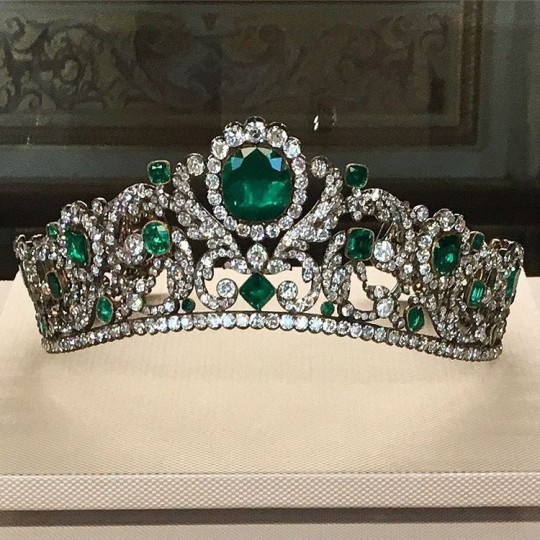
Emerald and Diamond Tiara by Bapst, Circa 1820
Worn by Various French Royalty, Including Empress Eugenie
On Permanent Exhibition @ The Louvre Museum
Source: davidwarrenchristies @ Instagram
#empress eugenie#bapst#antique tiara#high jewelry tiara#emerald#diamond#emerald and diamond tiara#emerald and diamond jewelry#high jewelry#luxury jewelry#fine jewelry#fine jewellery pieces#gemville
125 notes
·
View notes
Note
Any books to recommend about Empress Eugenie of France?
"Eugenie: The Empress and her Empire" :)

Book overview:
"From 1853 to 1870 Eugénie de Montijo was Empress of the French, sharing the Second Empire with her husband Napoleon III.
The last woman to reign over France, she personifies the allure glimpsed in Winterhalter's portraits and the music of Jacques Offenbach.
It was 'eighteen years of self-indulgence, folly and wild gaiety, of love affairs and unbelievable elegance', a survivor wistfully recalled. 'For a short time, too short a time, it seemed as if we were glittering ghosts from the splendours of the eighteenth century.' In many ways the Second Empire was a final flicker of the ancient regime.
This meticulously researched portrait reveals the empress as a nineteenth century fashion icon who possessed an intelligent and politically shrewd mind, whose splendour faded from view along with the Second Empire."
8 notes
·
View notes
Text
From Homeless Boy to Luxury Icon: The Remarkable Rise of Louis Vuitton
Louis Vuitton: The History of the World's Most Successful Luxury Brand-from Homeless Boy to $70 Billion Empire

Image Credit : https://www.logo.wine/logo/Louis_Vuitton
The story of a luxury group with humble beginnings
Louis Vuitton was born in 1821 to a farming family and learned how to make his first canvas suitcases, which were incredibly popular for their waterproof qualities. Early in his life tragedy would strike as he lost his mother at the tender age of 10.His father remarried, and that life became impossible; Louis left his home at 13 for Paris to make it happen on his own.Louis got a job in the big city working for The Box Maker & Packer extraordinaire named Romain. Louis then spent the following 17 years learning and perfecting his craft of making exclusive quality bags and trunks. One day his extraordinary abilities came to the notice of an important client – Empress Eugenie, the wife of Napoleon III. Having received this endorsement, Louis skyrocketed into the Parisian upper class, and in 1853 opened his own shop targeted at serving France's wealthiest citizens.
Disrupting The Luggage industry
His gift was not only for great workmanship; he had an eye for new things and that is what made Louis Vuitton so successful. He recognized three inefficiencies that plagued the luggage market: The bags of heavy pigskin which also cracked and deformed; dome-shaped designs were not ideal for train travel, tipping easily and did not contain compartments suitable to house smaller items - an unsecured solution at best (which eventually led him to observe sportsmen using closed-oval mouth-crafted cases attached by two cloth tapes); none offered to waterproof. Enter the "Steamer Trunk," Louis Vuitton's flat-topped, water-resistant lightweight solution for a world that was dominated by steam engine travel.Soon the Steamer Trunk became so popular with France's wealthy that Louis Vuitton was regarded as a leading luggage stevedore. But the road was not easy for this brand. In 1871, the Franco-Prussian War ravaged Vuitton's workshop in Asnieres but he considered this as a chance to then move his company further ahead by relocating next to Paris railway station and near Grand Hotel - which was more advantageous.

Image Credits : https://in.louisvuitton.com/eng-in/homepage
Securing the Brand Predecessor
Louis Vuitton was becoming a more and more popular brand, meaning the risk of counterfeit products increased. This was no problem for Louis's son, Georges Vuitton who invented the iconic Vuitton lock that even Harry Houdini himself could not escape from it. This eternally locked lock was an integral element in the brand's corporate identity - thanks to him, recognized luxury exclusivity.As if Georges Vuitton's spirit of innovation did not end. Sensing an opportunity, he recognized that the wealthy travelers of his day struggled with keeping their items organized and safe as they moved about. From this, the brand's famous trunks emerged complete with bespoke compartments designed for shirts and accessories as well as a separate compartment for dirt laundry. These practical and chic designs solidified Louis Vuitton as the couture brand for discriminating consumers of means.
Luxury's Next Global Powerhouse
While the world was moving from horse-drawn carriages to cars, with all that this mobility gain implied, the Vuitton family always continued to innovate. They created specialized trunks and luggage, suited to the new transport method of arrival and were easily integrated with themselves further enhancing their name as a supreme luxury for the quest. The luxury brand was continued by his family, who helped turn less than a dozen store chains into over 100 stores and more across the globe. Bernard Arnault, a French entrepreneur of the 20th century acquired it and turned LV into one of the original luxury companies with several thousand employees in the world's most expensive industry.

What We Can Learn From The Louis Vuitton Story
Louis Vuitton's Triumph is a Must-Read Tale for Every Aspiring Entrepreneur and Innovator
Sticking to the Basics: Louis Vuitton and his family committed themselves to being great at designing luggage - a seemingly simple thing that they took and turned into minutes. Recognizing and Solving Customer Needs The Vuittons, along with being good listeners who identified their growing customers' changing needs, we're also creative problem solvers providing cutting-edge solutions to requirements!, even in inclement weather.
Craftsmanship and Exclusivity: The brand's dedication to quality, craftsmanship, and the launch of an unbreakable lock made Louis Vuitton synonymous with luxury.
Persistence and Multigenerational Succession: A family business, whose timeline contains more than two hundred years - every generation of the Louis Vuitton dynasty upholds the brand heritage establishing it higher and above despite any reverses. From a homeless teen to the mastermind behind one of the most iconic luxury brands in the world, Louis Vuitton's exceptional life story is proof that success comes from innovation, determination, and an unrelenting commitment to quality. An enduring success that entrepreneurs and businesses around the world continue to aspire to - reminding us all as business leaders that, with a keen eye for an opportunity coupled with boldness in making decisions even just something simple can become global.
3 notes
·
View notes
Note
You did least favourite tiara, what about favourite tiaras?
Great idea! I think I'll prick my favourite tiaras from each country, and no commentary just so that this post doesn't ramble forever and ever. Just know that these are the ones that I like for either aesthetic or historical purposes. I'd say the best collections go to the British, Swedish, and Spanish in that order. Out of the fake monarchies Greece has some bangers in there:


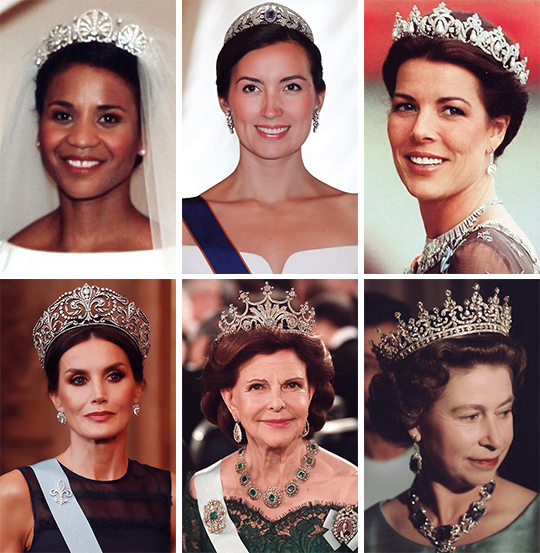
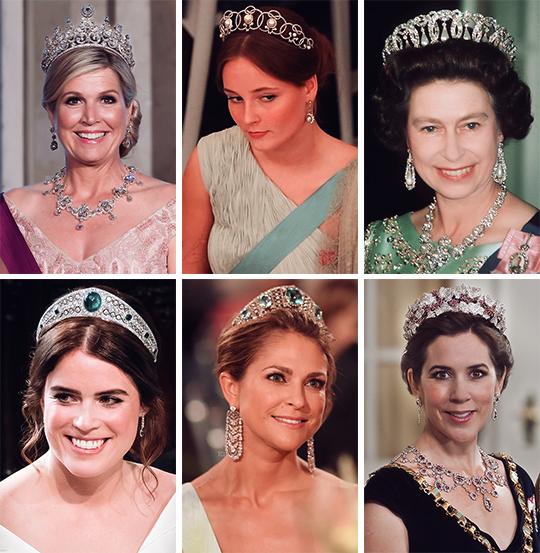
Belgium 🇧🇪 - Queen Astrid of Belgium's Nine Provinces Tiara (as a bandeau)
Brunei 🇧🇳 - Anisha Isa Kalebic's Diamond Tiara
Denmark 🇩🇰 - Princess Louise of the Netherlands' Pearl Poiré Tiara
Egypt 🇪🇬 - Queen Nazli of Egypt’s Diamond Tiara
France 🇫🇷 - Empress Josephine’s Cameo Tiara (it's in the Swedish vault but it's French in every other way)
Germany 🇩🇪 - The Prussian tiara (it's of German origin but is currently with the Spanish due to royal intermarrying)
Greece 🇬🇷 - Khedive of Egypt Tiara
Italy 🇮🇹 - Queen Margherita of Italy's Pearl & Diamond Tiara
Iran 🇮🇷 - Empress Farah of Iran’s Turquoise Tiara
Japan 🇯🇵 - Imperial Chrysanthemum Tiara
Jordan 🇯🇴 - Queen Noor's Sunburst Tiara
Lesotho 🇱🇸 - 'Masenate Mohato Seeiso's wedding tiara
Liechtenstein 🇱🇮 - Princess Maria Kinsky's Honeysuckle Tiara
Luxembourg 🇱🇺 - Grand Duchess Marie Adélaïde of Luxembourg's Sapphire Tiara
Monaco 🇲🇨 - Princess Charlotte of Monaco’s Pearl Drop Tiara
The Netherlands 🇳🇱 - Queen Wilhelmina of the Netherlands's Stuart Diamond Tiara
Norway 🇳🇴 - Princess Ingeborg of Sweden's Pearl Circle Tiara
Russia 🇷🇺 - Grand Duchess Vladimir Tiara (of Russian origin but is with the Brits)
Spain 🇪🇸 - Queen Victoria Eugenie of Spain's Fleur de Lys Tiara
Sweden 🇸🇪 - Nine-Prong Tiara
United Kingdom 🇬🇧 - Girls of Great Britain and Ireland Tiara
BONUS - The Greville Emerald Kokoshnik 🇬🇧
BONUS - The Swedish Aquamarine Kokoshnik 🇸🇪
BONUS - Queen Desiree of Sweden’s Ruby Parure Tiara 🇩🇰
5 notes
·
View notes
Text

The Empress Eugénie (Eugénie de Montijo, 1826–1920, Condesa de Teba)
Artist: Franz Xaver Winterhalter (German, 1805–1873)
Date: 1854
Medium: Oil on Canvas
Collection: Metropolitan Museum of Art, New York City, N.Y., United States
Description
Winterhalter began an official portrait of Empress Eugénie (Eugénie de Montijo, Condesa de Teba, 1826-1920) shortly after her marriage in 1853 to Napoleon III, emperor of France, but it was not exhibited until 1855. The present work is, in contrast, relatively intimate in scale and effect. It shows the empress in a Second Empire adaptation of an eighteenth-century gown. Her interest in the previous century, especially her fascination with Marie Antoinette, queen of France from 1774 to 1793, is well documented.
#portrait#empress eugenie#eugenie de montijo#contesa de teba#french monarchy#queen of france#oil on canvas#franz xaver winterhalter#german painter#garden#costume#woman#french history#19th century painting#german culture#painting#fine art#oil painting#european art#metropolitan museum of art
8 notes
·
View notes